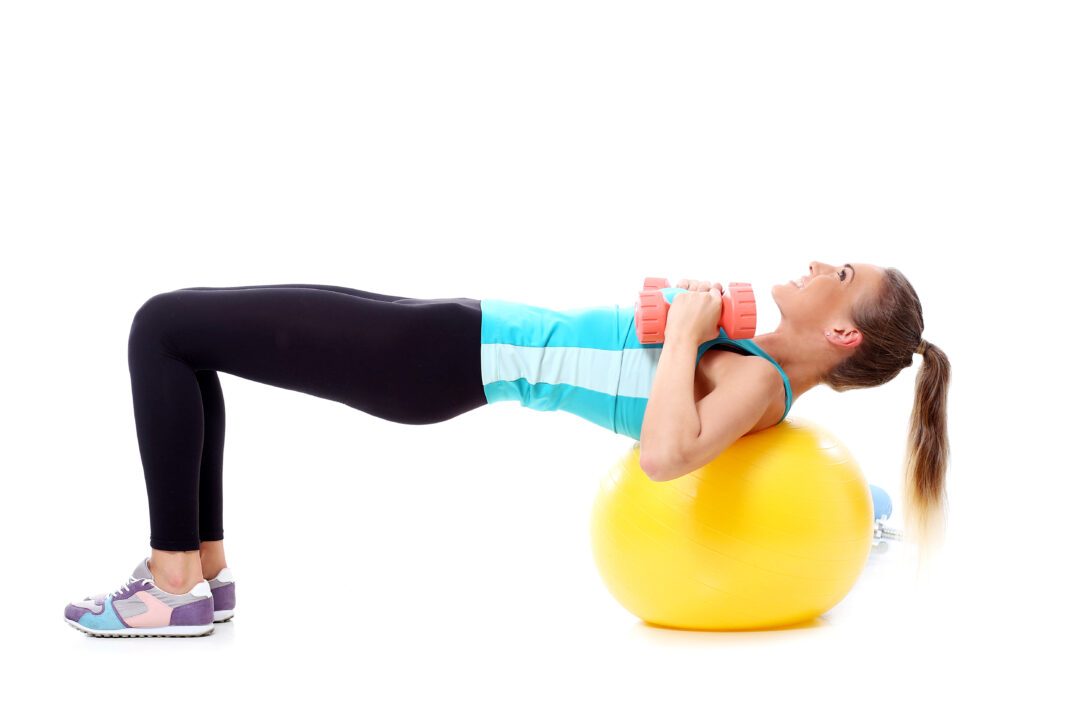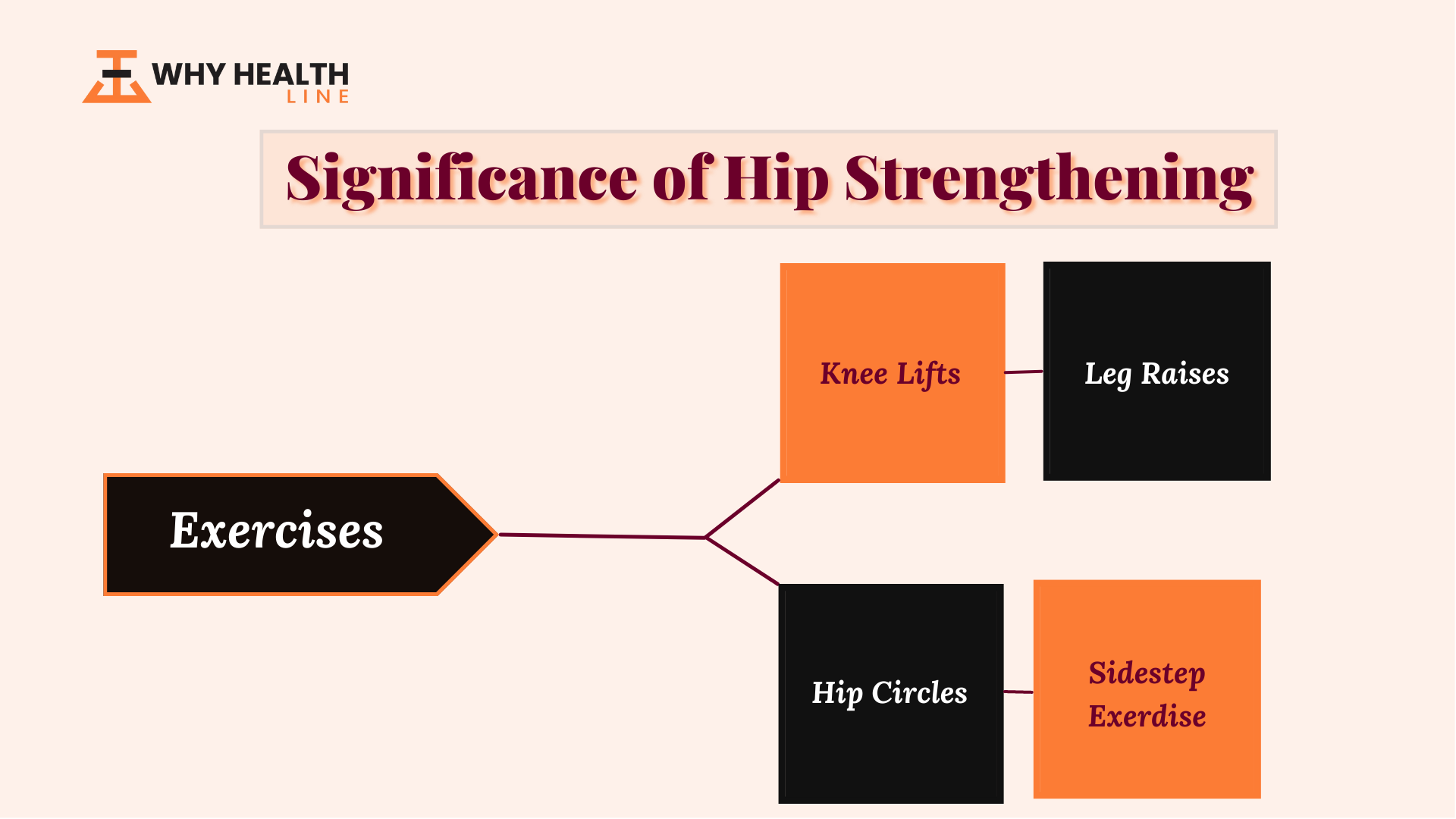Introduction
Hip stretching and hip strengthening exercises help build stability and flexibility so one can move with ease and avoid injuries.
Many people have relatively weaker or inflexible hips due to excessive sitting or little or no exercise. Exercise significantly helps build strength in your hips, glutes, and thighs.
It stabilizes the pelvic muscles and can relieve tightness in the lower back. Strong and flexible hip flexors are essential to improve running stride. Strong hip muscles also maintain the pelvis level.
When surrounding tissues are strong, there is less strain on hip bones, which allows better mobility. Moreover, the benefits of hip strengthening exercises do not stop at the hips; they are equally essential for our whole body.
Hips play an important role in knee alignment, so strengthening hips can also improve knee and leg pain.
What Muscles Should You Be Targeting?
In order to stretch and strengthen the hips, The Following Muscles Should Be Targeted:
- The gluteus maximus.
- The gluteus medius.
Both men and women can target the same muscle. In general, men often have inflexible muscles around the hip area more than women, though this can vary.
Anyone with tight, inflexible hips should start doing strengthening exercises slowly, without putting too much pressure on the hip muscles, and building up gradually.
How Long Does It Require to Strengthen Weak Hips?
The duration it takes to strengthen weak hips can vary depending on different factors, including the severity of weakness, the individual’s fitness level, and the exercises used.
In general, it’s recommended to gradually increase the intensity and frequency of hip strengthening exercises over a period of several weeks or months.
Consistency is key, and it’s important to continue performing the exercises regularly to see results.
It’s also important to note that hip weakness can be caused by various underlying issues, such as poor posture, muscle imbalances, or injury.
Therefore, it’s important to address the root cause of the weakness and consult with a healthcare professional or a qualified fitness trainer to create a personalized hip strengthening plan.
Depending on the severity of hip weakness and the effectiveness of the treatment plan, it can take anywhere from a few weeks to several months to see significant improvement.
However, it’s important to remember that strengthening weak hips is a gradual process, and results may vary for each individual.
Different Exercises For Hip Strengthening And Increasing Mobility In The Hips
Strengthening the hip flexors can help you maintain core stability and good posture, reverse the effects of sitting, decrease the likelihood of pain and injury, improve the symptoms of weak hip flexors, and increase athletic performance.
Hip pain is quite common among elderly people. About 15% of people over age 65 experience hip pain, joint deterioration, and arthritis, which can all result in injuries, pain, and stiffness. This can restrict the mobility of a person and impact his quality of life.
Nowadays, people opt for nonsurgical treatments like exercising in order to improve pain by strengthening the hip muscles. These exercises strengthen the ligaments, tendons, and muscles that support your hip movements.
Following are a few hip strengthening and stretching exercises that can significantly help you build strength in your hip muscles as well as in other body parts.
1. Knee Lifts:
Knee lifts stretch the thigh muscles, hip flexors, and gluteal muscles. For this hip strengthening exercise, lie flat on your back with your legs outstretched.
Bring your right knee close to your chest, and keep the left knee pressed against the floor, hold this position for at least 40 seconds. Repeat on the other side. Try to do two to three sets on each side.
2. Leg Raises:
Leg raises effectively build strength in your hip muscles. For this hip strengthening exercise, lie on your right side, and try to prop your upper body up with the elbow.
While resting your right leg on the ground, lift the top leg as high as possible without bending the body or leg. Hold the position for five to ten seconds, then lower your leg. Repeat this process a few times.
3. Hip Circles:
Hip circles are a standing exercise that enhances flexibility and stability in the hip muscles. To begin this hip strengthening exercise, stand on your left leg and extend the right one.
If you feel unbalanced or unstable, you can hold onto any object, like a chair or wall, for support. Meanwhile, move the right leg in small circles. Try to do 20 to 25 circles in both clockwise and anticlockwise directions. Then do circles with the left leg.
4. Sidestep Exercise:
For this hip strengthening exercise, keep the hips and toes straight ahead. Increase the intensity by lowering the band, so it is above the ankles and your squat position.
Stand in a half-squat position and wear a resistance band around the lower thighs. Then engage the hip muscles as you take small steps.
Take 8 to 15 steps in one direction, then do the opposite side. For better results, repeat this whole process at least three to four times.
Do Hip-Strengthening Exercises Help Hip Pain?
Yes, strengthening your hips can help alleviate hip pain. The hip joint is a complex joint that relies on the coordination of muscles, tendons, and ligaments to function properly. Weakness or imbalances in these supporting structures can result in pain and discomfort.
Hip pain can have many causes, including arthritis, bursitis, tendinitis, muscle strains, and even hip fractures.
However, regardless of the cause of hip pain, strengthening the muscles around the hip joint can help improve stability and reduce stress on the joint.
Exercises that strengthen the hips include squats, lunges, step-ups, and hip bridges. These hip strengthening exercises can help improve the strength and stability of the muscles that support the hip joint, including the gluteal muscles, hip flexors, and quadriceps.
Benefits of Hip-Strengthening Exercises
Strong muscles around your hips allow the hip joints to efficiently work in each range of motion, flexion, extension, abduction, internal rotation, and external rotation.
- Strong hip flexors help maintain core stability and good posture.
- Reverse the effects of sitting.
- Improve the symptoms of weak hip flexors.
- Reduce the risks of severe pain and injury.
- Improve athletic performance.
FAQs:
What Factors Can Weaken The Hip Muscles?
There are various reasons that can potentially weaken your hip flexors. One of the major causes is the underuse of the muscles or sitting down for prolonged periods. Conditions such as osteoarthritis can also cause weakness in this muscle group.
Can Cycling Prove To Be Good For Your Hip Flexors?
Cycling keeps the hips flexible and mobile, which benefits overall hip function. It also tones the oblique and abdominal muscles and engages the muscles on your back, legs, and hips.
What Are The First Signs of Hip Problems?
Various signs indicate that you might have weakened or inflexible hip muscles, such as:
- You are unable to bear excess weight.
- Your hips make a popping sound as you walk.
- Your hips have become visibly deformed after a fall.
- You are experiencing extreme pain or sudden swelling in your hip flexors.
Can Squats Strengthen Hips?
Squats can significantly strengthen hips. Squats are a compound exercise that targets several muscle groups, including the quadriceps, glutes, and hips.
When you perform a squat, you engage these muscles, which can help to build strength and stability in the hips.
In particular, the glutes and hips become heavily activated during squats, especially if you perform them with proper form and a full range of motion.
The glutes are responsible for hip extension, which is a key movement pattern in squatting. Strengthening the glutes can also help to alleviate lower back pain and improve posture.
In addition to strength, squats can also improve hip mobility and flexibility. By squatting through a full range of motion, you can effectively maintain and improve the range of motion in your hip joints.



